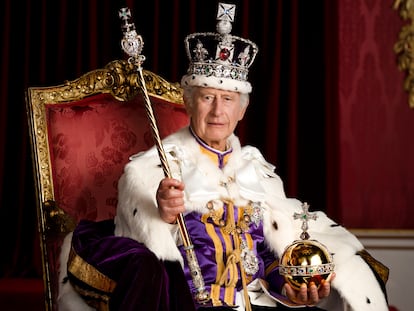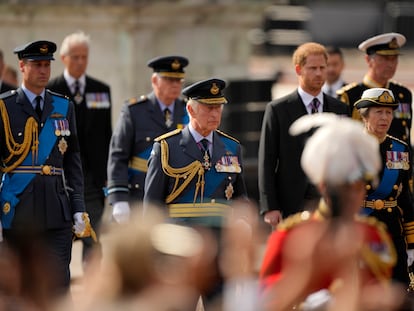King Charles III at 75: His four milestone moments
A sad childhood, a doomed first marriage and a coronation hand in hand with the love of his life. We review the key events that have marked a before and after for the U.K.’s monarch
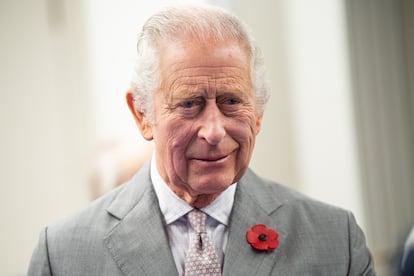
This Tuesday, November 14, Britain’s King Charles III turns 75. Also sovereign of another 14 Commonwealth countries, he will celebrate the day in his official residence of Clarence House, in London, with members of his family. But not all of them. His son Harry, Duke of Sussex, will not be present. Despite being no stranger himself to feeling misunderstood within The Firm, the quarrels between father and son ramped up when the Prince and his wife, Meghan Markle, decided to renounce their royal titles, with tension intensifying further with the premiere of the docuseries Harry & Meghan on Netflix and the publication of Spare, Harry’s long-awaited memoir.
But the estrangement is unlikely to overshadow Charles’ special birthday celebrations. Aside from making it to 75, Charles is also celebrating his first year on the throne with the woman he loves. What follows is a review of the key moments that have marked his life.
The lonely childhood of a very young heir
The first word Charles uttered was not “mummy” but “nanny.” Elizabeth II and the Duke of Edinburgh’s firstborn did not enjoy the usual surfeit of attention from first-time parents, who were then aged 22 and 27 respectively. When Charles was not yet four, his mother became queen and could hardly give her little boy any attention at all, something that marked him for life.

The absence of a hands-on mother and father figure exacerbated the insecurity of this shy and sensitive child who failed to live up to his father’s expectations. Charles was the first heir to the British throne to go to an actual school, instead of receiving his education at the palace. He first went to a school in Knightsbridge, central London, and later attended Cheam’s prep school in Hampshire. But undoubtedly the place that shaped him was Gordonstoun, a boarding school in the Scottish highlands that his father had attended. A “Spartan” school, according to Philip, where children were taught “self-control.” What Philip saw as the ideal place to toughen his son up was a living hell for Charles as he struggled with constant bullying from his peers.
Jonathan Dimbleby, author of The Prince of Wales: A Biography, describes how, as a child Charles “was easily cowed by the forceful personality of his father,” whose rebukes for “deficiency in behavior or attitude easily drew tears.” Elizabeth II was also considered a distant and cold mother. About that, Charles assured Dimbleby that “she was not indifferent so much as detached.” The lack of any physical displays of affection was glaring; in 1954, when Elizabeth and Philip returned from a half-year tour of the Commonwealth, they greeted Charles, then five and his three-year-old sister Anne by shaking their hands.
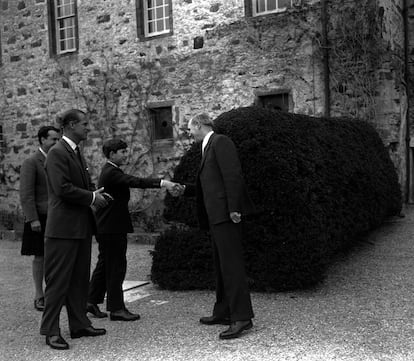
Charles received so little affection as a child that he became accustomed to not being touched. In April, Prince Edward von Anhalt-Dessau, his cousin, revealed in an interview with the German magazine Stern that the current monarch “used to lose control when someone touched him spontaneously, put his hand on his arm or even on his shoulder.” It is a trauma that he has overcome thanks to his wife, Camilla Parker-Bowles.
Diana, the faux fairy tale
In November 1977, Charles met Diana Spencer. He was 29 and she was 16 when they ran into each other on her 1,500-acre family estate in Northamptonshire. Dating Diana’s older sister Sarah at the time, Charles could hardly have suspected the impact this young woman would have on his life.
Three years later, in July 1980, one of the world’s most ill-fated romances took off. Both Charles and Diana had been invited to spend the weekend with Philip de Pass, a mutual friend, in Sussex. There they began talking about the recent death of Lord Mountbatten, Charles’ great-uncle and, in a home video recording, Diana recounted how her sympathy prompted Charles to shower her with kisses. He “leapt” on her, she said, and was “all over me.” The relationship developed fast. Seven months into the courtship, Charles had already proposed marriage. Diana was just 19. They had only been on 13 dates, but she accepted, and on July 29, 1981, the two exchanged vows in St. Paul’s Cathedral, in front of more than 750 million spectators, in a wedding that was dubbed “the wedding of the century.” Their son William was born in 1982, and Harry in 1984.
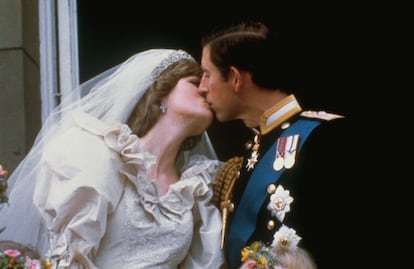
But the marriage quickly fell apart. There was not just a big age gap, the couple were different in many respects. While Charles was reserved and retiring, Diana was cheerful, fun, sensual, and enjoyed the spotlight. Britain loved her. But her popularity made Charles uncomfortable and his public displays of jealousy only served to magnify her appeal while dwarfing his own.
Speculation of a crisis in the marriage was confirmed when the pair spent their sixth wedding anniversary apart in 1987. They endured five more tortuous years, until Prime Minister John Major announced before the House of Commons that the Prince and Princess of Wales were separating. “This decision has been reached amicably, and they will both continue to participate fully in the upbringing of their children,” Buckingham Palace said in a statement. However, amicable it was not. In 1994, Charles admitted on TV that he had been unfaithful. He remained faithful “until it [the marriage] became irretrievably broken down,” he said. A year later, it was Diana’s turn. Talking to the BBC, she uttered the famous line, “There were three of us in this marriage, so it was a bit crowded.”
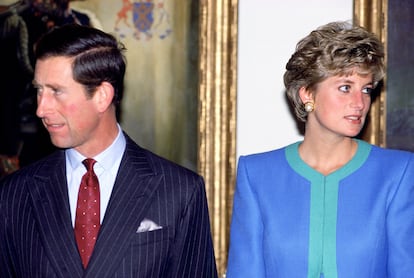
In August 1996, the pair officially divorced. The so-called fairy tale was over. They could finally get their lives back together. But the respite lasted just 12 months. On August 31, 1997, the death of Diana of Wales while fleeing the paparazzi in Paris with her new partner Dodi al-Fayed sent shockwaves around the world. The figure of Lady Di became indelibly etched on our collective psyche. For Charles, the ghost of their failed relationship still haunts him today.
Camilla, his true love
If we were to recount Charles’ story in chronological order, mention of Camilla Rosemary Shand would precede that of Lady Di. She has been a constant in Charles’ life. In 1970, long before Diana, the pair met at a polo match at Windsor Great Park, polo being a common interest. According to People magazine, Camilla, then 24, approached Charles, then 22, to caress his thoroughbred and after a few compliments about the horse told him that her great-grandmother, Alice Keppel, was his great-great-grandfather, Edward VII’s mistress. Second thing in common.
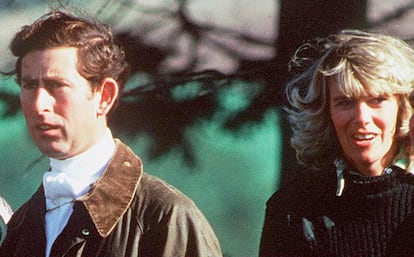
The connection between the two was instant and they continued to see each other. Enter British Army officer Andrew Parker-Bowles. In 1973, taking advantage of the fact that Charles was away on a tour, Camilla married Parker-Bowles. Charles found out in the press. Royal author Penny Junor recounts in her book The Duchess: Camilla Parker-Bowles and the Love Affair that Rocked the Crown, that Charles was heartbroken. Consequently, Camilla sent him a letter and convinced him to find another woman. Diana Spencer turned out to be the one.
But Charles and Camilla never entirely ditched their special relationship. They often went on the same weekend getaways and Charles was chosen as godfather to Tom, the Parker-Bowles’ firstborn. If Diana and Charles announced their separation in 1992, Camilla and Andrew ended their marriage in 1994. The divorce of both couples seemed to open the way for Charles and Camilla, but Diana’s unexpected death put their plans on the back burner.
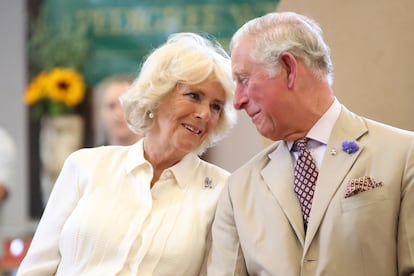
Charles and Camilla’s first public appearance together was in 1999. Two years had passed since Diana’s death, but the British people still did not look favorably on their relationship. The couple decided to weather the hostility and, gradually, both the public and the royal family accepted them as an item. On April 9, 2005, after 35 years, they were finally able to marry. This time round, it was an intimate ceremony held at Windsor Town Hall, attended by only 30 guests, not including the groom’s parents. Queen Elizabeth II and Prince Philip were present at the later prayer ceremony in St. George’s Chapel.
Charles’ biographers say that Camilla has transformed him over time. That he is finally happy; that as Penny Junor told Vanity Fair in January, “She gives him confidence.” So much so that it has ended his aversion to being touched, as Prince Edward von Anhalt-Dessau stated in his interview with Stern: “Charles had a big trauma that Camilla addressed. Now he is very relaxed, even when he is surrounded by people and they touch him. That is clearly to Camilla’s credit.”
The wannabe king who finally reigned
When Elizabeth II became Queen at the age of 25, Charles became one of the youngest heirs to the British throne. At the age of three, he was already next in line and began preparing for the role. Seventy years and more than 200 days later, just days after his mother’s death on September 8, 2022, he became the oldest heir to ascend the British throne. He was 73.

Many already thought that the crown would pass directly to Prince William but they were wrong. May 6, 2023, became a historic day for Britain and especially for Charles, who was finally crowned alongside his wife, Camilla. After waiting seven decades to reign, the monarch was impatient in the run-up to his big moment. “We can never be on time,” Charles complained to Camilla inside his carriage, according to lip-reading experts.
But they made it and the ceremony was watched by 2,200 guests in Westminster Abbey as well as thousands of citizens on the streets and many thousands more who watched it on TV. “I Charles do solemnly and sincerely in the presence of God profess, testify, and declare that I am a faithful Protestant, and that I will, according to the true intent of the enactments which secure the Protestant succession to the Throne, uphold and maintain the said enactments to the best of my powers according to law,” he swore with his hand on the Bible. Later, Camilla received the crown from Queen Mary of Teck, ushering in the first coronation ceremony for a consort since 1937 — Elizabeth II herself had used her Platinum Jubilee message to make it clear she wished for her daughter-in-law to be called queen when the time came.
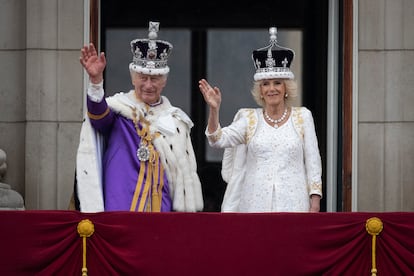
When he came to the throne, Charles thanked his mother for her devotion and love of family. He wasn’t referring to her actual family but to “the family of nations she served diligently for years.” His promised to be a more modern and less conservative monarch, conscious of causes such as the environment and inclusion. However, it seems Charles is beginning to understand that reigning is no walk in the park; last week, in his first King’s Speech to the British Parliament he found himself contradicting his own passionately held beliefs and endorsing future licenses for new oil and gas fields and a tough approach to immigration.
It is still too early to tell whether Charles’ reign will actually depart from tradition as he promised or end up being more similar to his mother’s. One thing is certain, it will be much shorter.
Sign up for our weekly newsletter to get more English-language news coverage from EL PAÍS USA Edition
Tu suscripción se está usando en otro dispositivo
¿Quieres añadir otro usuario a tu suscripción?
Si continúas leyendo en este dispositivo, no se podrá leer en el otro.
FlechaTu suscripción se está usando en otro dispositivo y solo puedes acceder a EL PAÍS desde un dispositivo a la vez.
Si quieres compartir tu cuenta, cambia tu suscripción a la modalidad Premium, así podrás añadir otro usuario. Cada uno accederá con su propia cuenta de email, lo que os permitirá personalizar vuestra experiencia en EL PAÍS.
¿Tienes una suscripción de empresa? Accede aquí para contratar más cuentas.
En el caso de no saber quién está usando tu cuenta, te recomendamos cambiar tu contraseña aquí.
Si decides continuar compartiendo tu cuenta, este mensaje se mostrará en tu dispositivo y en el de la otra persona que está usando tu cuenta de forma indefinida, afectando a tu experiencia de lectura. Puedes consultar aquí los términos y condiciones de la suscripción digital.
More information
Archived In
Últimas noticias
Sydney Sweeney, the actress praised by Trump: ‘Women are up against what society wants them to be’
The Bolsonaro surname: An advantage or liability in Brazil’s 2026 presidential elections?
Raúl Rocha, from jet-setting with Miss Universe to arms trafficking and fuel theft
80,000 barrels of Mexican oil sent to Cuba: Havana drawn into the US–Mexico clash
Most viewed
- Reinhard Genzel, Nobel laureate in physics: ‘One-minute videos will never give you the truth’
- Pablo Escobar’s hippos: A serious environmental problem, 40 years on
- Charles Dubouloz, mountaineering star, retires at 36 with a farewell tour inspired by Walter Bonatti
- Why we lost the habit of sleeping in two segments and how that changed our sense of time
- The fall of a prolific science journal exposes the billion-dollar profits of scientific publishing

